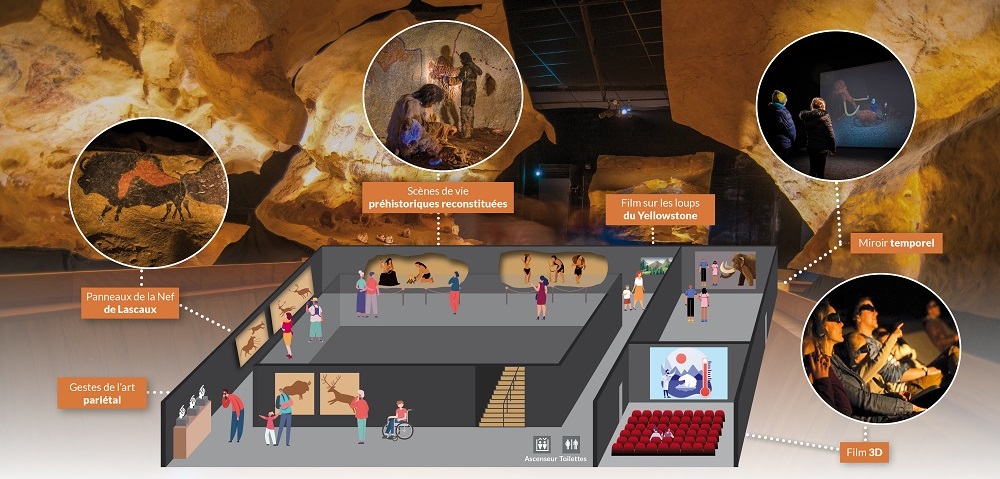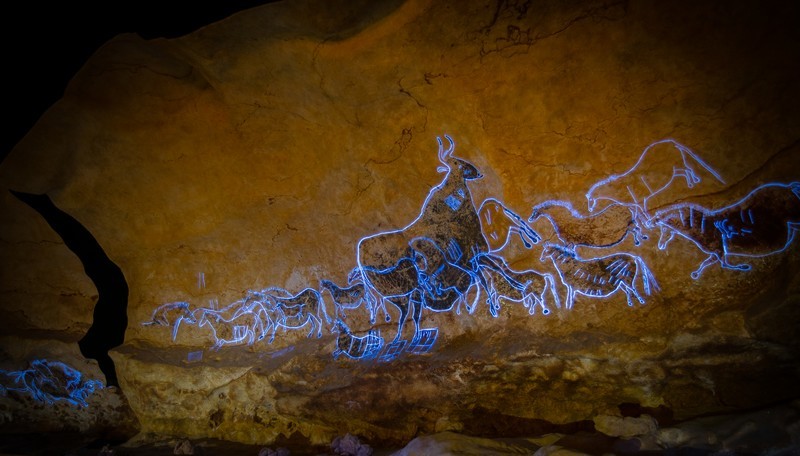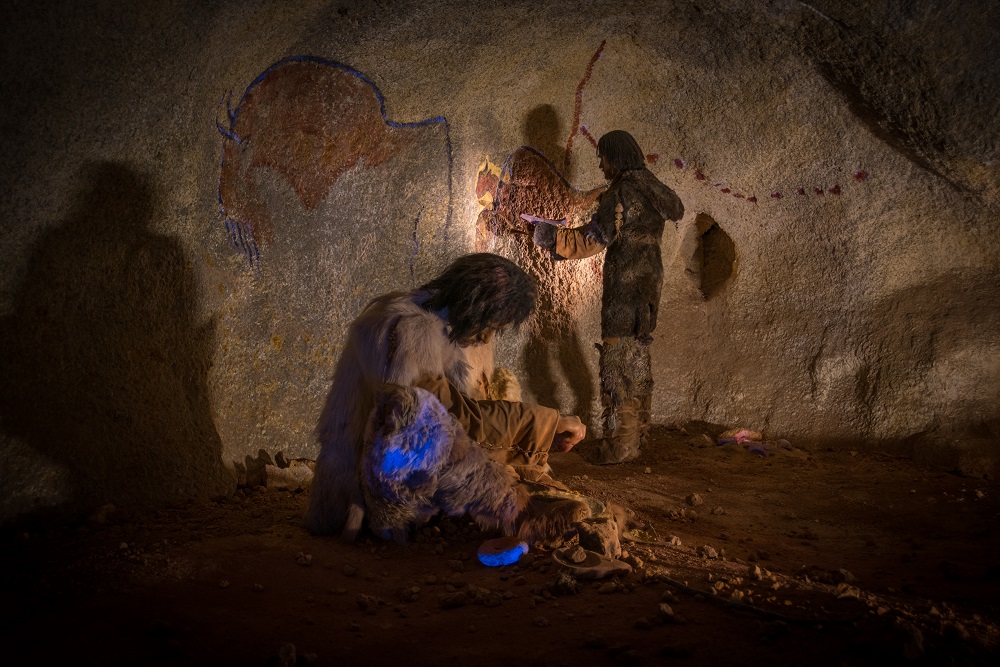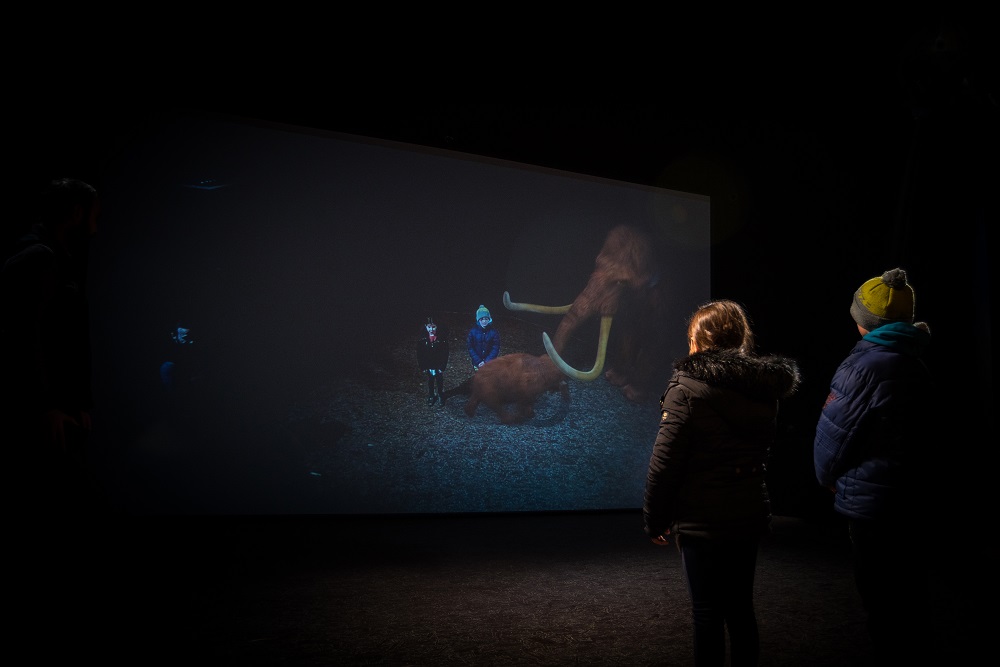During your visit, discover the interior pedagogical space, that will allow you to better understand the life of prehistoric men and the role of the animals who used to live in the region. How did prehistoric people live ? Which relationship did they have with animals ? What led to the disappearance of some symbolic species ? Prehistoric times will no longer be a mystery to you.

Explore the park and museum
-

Panels of Lascaux
In the heart of the museum, five life-sized facsimiles of Lascaux walls are highlighted by a lighting that alternates between natural and black light. Take the time to discover the images of buffalo, ibex, aurochs,
deer and horses painted under different lightings.
Those plays of light show you in turn the walls the way the artists and the reseachers saw them. Have fun spotting as many details as possible in the animal depictions, then try to find them on the animals of the park.
-

Scenes from life
Along the path, you will find recreated scenes of prehistoric encampments. What equipment was essential to survive the Ice Age ? Flint tools, lamps, hunting weapons… The Paleolithic inhabitants of the valley of the
Vézère left various remains, that allowed archaeologists to better understand their daily lives.
Discover experimental archaeology through short films, depicting the manufacture of prehistoric objects, watch the precision of the movements, and admire the mastery of ancient skills…
-

Temporal Mirror
This augmented reality animation, offers a unique and interactive experience. Come face to face with the species that lived alongside Cro-Magnon humans : woolly mammoth, cave bear, cave hyena, megaloceros…
-

3D film
This 12-minute 3D movie immerses you in the history of climatic cycles over the past two million years, and helps you understand the impact on the evolution of animal and human species. By what mechanisms did the immense ice cap, which covered a large part of the Northern Hemisphere, melt in just a few millennia ? And
how many times has this phenomenon occurred over the past two million years ?





